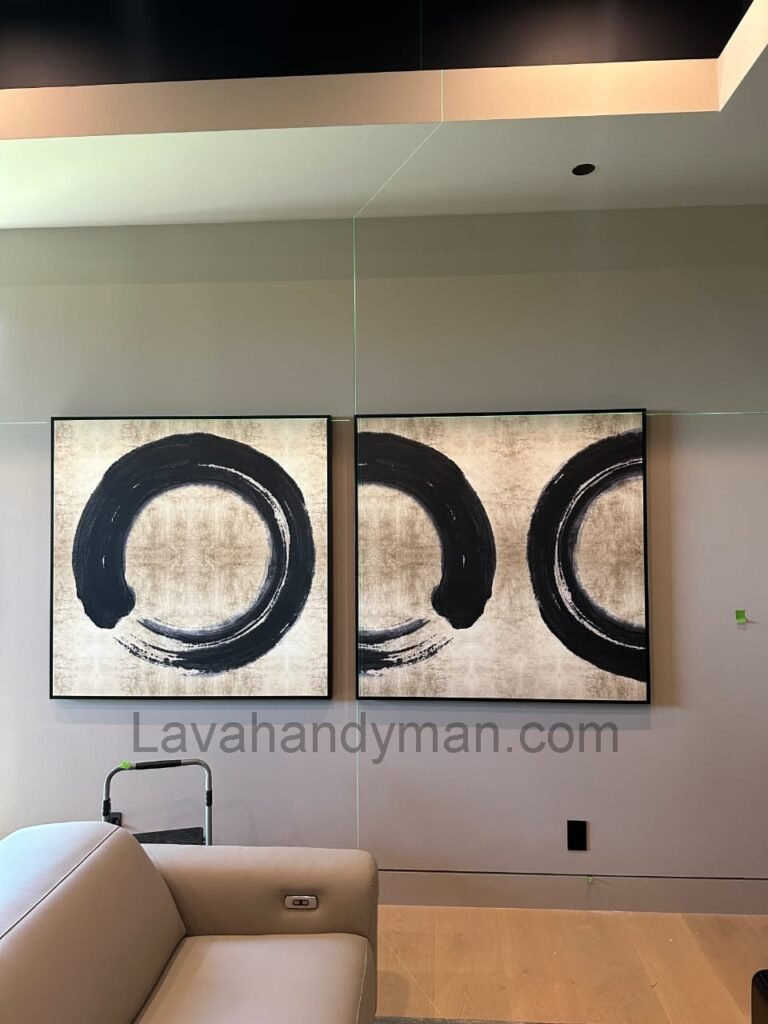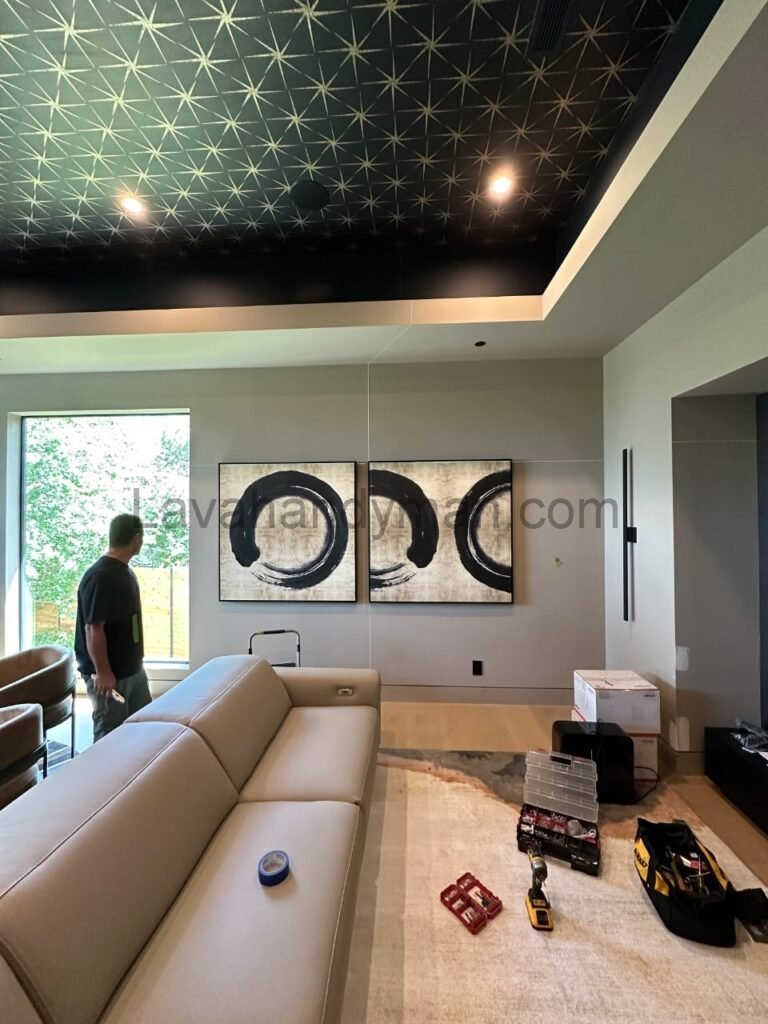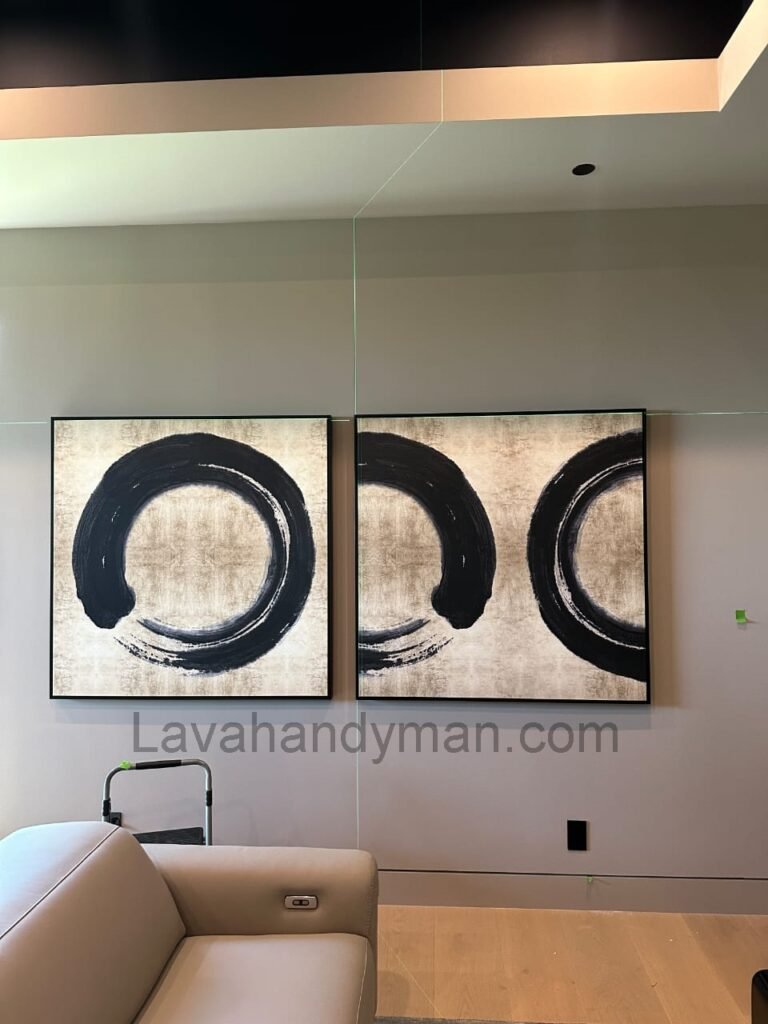The Role of Artistic Wall Decor in Commercial Spaces
Introduction
In today’s competitive business landscape, interior design is no longer a mere decorative element; it has become a powerful tool for enhancing customer experience, improving employee productivity, and reinforcing brand identity. Among the various elements of commercial interior design, the strategic use of wall art stands out as a key factor. When chosen and installed thoughtfully, artwork can transform a commercial space into an inspiring, professional, and memorable environment.
1. Importance of Art in Commercial Interiors
A) Strengthening Brand Identity
Art can visually convey a company’s values, culture, and vision. When the colors, themes, and styles of the artwork align with the brand identity, they help create a cohesive and impactful environment.
B) Enhancing Visual Appeal
In public-facing spaces like offices, restaurants, shops, or hotel lobbies, artwork draws attention and creates focal points. It helps shape a memorable customer experience and differentiates the space from competitors.
C) Promoting Calm and Creativity
In work environments, well-chosen art pieces can reduce stress, spark creativity, and foster a sense of motivation among employees. The right themes and styles contribute significantly to a healthier workplace ambiance.
The Role of Artistic Wall Decor in Commercial Spaces

2. Types of Art Suitable for Commercial Use
- Classical or Modern Paintings: The choice between traditional or contemporary styles depends on the nature of the business and its brand character.
- Digital Prints or Artistic Photography: A cost-effective and customizable option that fits well with modern, minimalist interiors.
- Local or Cultural Art: Showcasing local artists supports the community and creates cultural resonance with clients and staff.
- Conceptual or Multimedia Art: Ideal for creative or tech-oriented environments, reflecting innovation and forward-thinking values.
3. Key Considerations for Selecting and Installing Art
- Scale and Proportion: Artwork should be appropriately scaled to the wall and room size. Large pieces suit expansive spaces, while smaller works complement more compact areas.
- Color Coordination and Style: Colors should harmonize with the overall décor or deliberately contrast to create visual interest.
- Placement: Art should not obstruct movement or workflow. Ideally, pieces are hung at eye level (approximately 140–150 cm from the floor).
- Lighting: Proper lighting without glare enhances the visual impact and preserves the artwork’s details.
The Role of Artistic Wall Decor in Commercial Spaces
4. The Impact of Art on Customers and Employees
For Customers:
- Builds a sense of trust and professionalism
- Encourages longer visits and deeper engagement
- Positively influences purchasing decisions
For Employees:
- Increases job satisfaction and workplace connection
- Boosts concentration and creativity
- Breaks visual monotony and enhances mental well-being
The Role of Artistic Wall Decor in Commercial Spaces
5. Successful Use of Art in Different Commercial Settings
- Restaurants: Art themed around food, culture, or local heritage adds warmth and personality.
- Tech Companies: Abstract and modern pieces reflect innovation and dynamic thinking.
- Medical Clinics: Nature-themed or calming artworks help reduce patient anxiety.
- Retail Stores: Trendy or lifestyle-related art supports branding and attracts the target audience.
6. Maintenance and Art Rotation Tips
- Regular cleaning maintains the artwork’s visual appeal.
- Art should be updated periodically to reflect changes in branding or interior design.
- Use high-quality frames, anti-glare glass, and professional lighting to protect and preserve the art.
The Role of Artistic Wall Decor in Commercial Spaces
The Importance of Installing Artworks in Different Environments
1. Office and Corporate Spaces
- Boosting Productivity and Focus:
Inspiring artwork with vibrant colors and dynamic forms can enhance creativity and motivation among employees. - Strengthening Organizational Identity:
Art aligned with a company’s values adds professionalism and consistency to the workplace. - Reducing Stress and Visual Monotony:
Thoughtful art installations bring life to sterile environments and create a more pleasant work atmosphere.
The Role of Artistic Wall Decor in Commercial Spaces
2. Commercial Spaces and Retail Stores
- Attracting Customer Attention:
Artistic displays in shop windows or interiors help catch the eye of potential customers. - Enhancing the Shopping Experience:
Carefully selected art tailored to the brand environment creates a memorable and enjoyable experience for shoppers. - Defining Brand Identity and Style:
Art serves as a visual extension of the brand’s character and market positioning.
3. Healthcare Facilities (Clinics, Hospitals, Medical Offices)
- Reducing Patient Anxiety:
Soothing artwork—such as natural landscapes or soft color schemes—can calm patients and ease tension. - Creating a Trustworthy and Professional Atmosphere:
A well-designed environment featuring curated artwork helps build trust and comfort. - Improving Waiting Room Experience:
Visually engaging spaces help make waiting more bearable and reduce perceived wait times.
4. Restaurants and Cafés
- Adding Warmth and Character to the Space:
Unique and thematic artwork enhances the ambiance and makes the environment more welcoming. - Encouraging Social Sharing:
Visually captivating spaces are more likely to be photographed and shared on social media. - Extending Customer Stay:
A beautifully decorated dining area encourages patrons to relax and stay longer, often increasing spending.
5. Educational Institutions (Schools, Universities, Learning Centers)
- Inspiring Curiosity and Motivation:
Artworks with educational, cultural, or motivational themes can stimulate learning and engagement. - Reinforcing Cultural and Institutional Identity:
Art reflecting historical or local significance strengthens the emotional connection to the institution. - Humanizing the Learning Environment:
Thoughtful décor transforms cold academic spaces into inspiring and student-friendly environments.
The Role of Artistic Wall Decor in Commercial Spaces

6. Residential Spaces
- Expressing Personality and Taste:
Art choices often reflect the resident’s artistic sensibilities, values, and personal stories. - Completing the Interior Design:
Artwork helps unify colors and textures, elevating the overall harmony of the home. - Creating Comfort and Emotional Connection:
Meaningful artwork—whether of nature, family, or abstract concepts—brings warmth and a sense of belonging to living spaces.
🎯 Ideal Height for Hanging Artwork
Choosing the right height to hang a piece of art is just as important as selecting the artwork itself. Even the most beautiful piece can lose its impact if it’s placed incorrectly.
✅ General Standard (Suitable for Most Spaces)
📏 The center of the artwork should be positioned about 145 to 150 cm (57 to 59 inches) from the floor.
This height aligns with the average eye level when standing and ensures comfortable, natural viewing.
🔹 Tip: For larger pieces, measure the vertical center of the artwork and place that point at around 145 cm from the floor.
📌 Adjusting Height Based on Location
- Above a Sofa or Console Table:
The bottom edge of the artwork should be about 20 to 30 cm (8 to 12 inches) above the furniture. - In Seating Areas (Living Rooms, Lounges):
Position the center of the artwork around 100 to 120 cm (39 to 47 inches) from the floor, matching the seated eye level. - Hallways or High-Traffic Areas:
Hang artwork slightly higher (150 to 160 cm) to avoid accidental contact or damage. - Galleries and Exhibition Spaces:
Maintain a consistent center height (typically 145 cm) across all artworks for a clean, cohesive visual line.
🚫 Common Mistakes to Avoid
Placing art where it’s affected by direct sunlight or glare, reducing its visibility and longevity
Hanging artwork too high or too low, straining the viewer’s neck or disrupting visual balance
Using artwork that is too small or too large for the wall
✅ Key Tips for Hanging Artwork
1. 🎯 Choose the Right Location
Hang the artwork where it’s clearly visible and avoid high-traffic or hidden spots like behind doors. Make sure the art fits the purpose and vibe of the space.
2. 📏 Follow Standard Height Guidelines
Place the center of the artwork about 145 to 150 cm (57 to 59 inches) from the floor. Above sofas or consoles, leave about 20 to 30 cm (8 to 12 inches) between the bottom edge of the art and the furniture.
3. 🎨 Match the Size of the Artwork to the Wall
Avoid art that’s too small or too large for the wall. Ideally, the piece should cover about 60 to 70% of the width of the wall above the furniture.
4. 🖼️ Arrange Multiple Pieces (Gallery Wall)
If hanging multiple artworks, keep 5 to 10 cm (2 to 4 inches) between frames and choose a layout—whether grid or freeform—that complements the room’s style.
5. 💡 Use Proper Lighting
Enhance your artwork with focused lighting, and avoid direct sunlight or harsh bulbs that can damage colors over time.
6. 🛠️ Ensure Secure and Level Installation
Use appropriate hooks and hardware suited to the artwork’s weight, and always hang pieces level using a spirit level.
7. 🧩 Coordinate with Your Decor
Choose artwork and frames that harmonize with the room’s colors and style to create a balanced visual impact.
The Role of Artistic Wall Decor in Commercial Spaces
8. ♻️ Allow for Flexibility
For spaces where you like to change decor often, consider adjustable hanging systems like rails for easy rearrangement.
📏 Guide to Accurate Measurement for Hanging Artwork
1. Determine the Center Height
Start by deciding the standard hanging height (usually 145 to 150 cm from the floor). Measure the artwork’s height and divide it by two to find its center point.
2. Calculate the Hook Placement
Measure the distance from the hook or hanging point to the top edge of the frame. Subtract this from the center height to find the exact spot to place the nail or hook on the wall.
3. Use a Level
To ensure the artwork hangs straight and balanced, use a handheld or laser level. Check the alignment after hanging.
The Role of Artistic Wall Decor in Commercial Spaces
4. Consider Surrounding Furniture
If hanging above a sofa or console, leave about 20 to 30 cm between the bottom edge of the artwork and the furniture. For multiple pieces, maintain 5 to 10 cm spacing between frames.
5. Mark the Wall Precisely
Use a pencil or painter’s tape to mark the nail spots on the wall. Double-check measurements before drilling.
6. Safety and Professional Tips
For heavy artwork or special wall types (like drywall or concrete), use appropriate anchors and hardware, or consult a professional if needed.
Conclusion
Art in commercial environments goes beyond decoration—it plays a strategic role in shaping atmosphere, influencing perception, and enhancing user experience. Selecting and displaying the right pieces can improve employee engagement, leave a lasting impression on clients, and elevate a brand’s image. Investing in well-curated artwork is not just an aesthetic choice but a valuable business decision.
At LavaHandyman.com, we don’t just help you understand TV tech — we also offer expert TV installation services, making sure your home entertainment setup looks and performs at its best.
📞 Need Help?
Let us take care of the hard work while you sit back and relax.
📍 Serving: Austin, Round Rock, Cedar Park & more
📱 Call or Text: (737) 420-6992
🌐 Visit: https://lavahandyman.com


